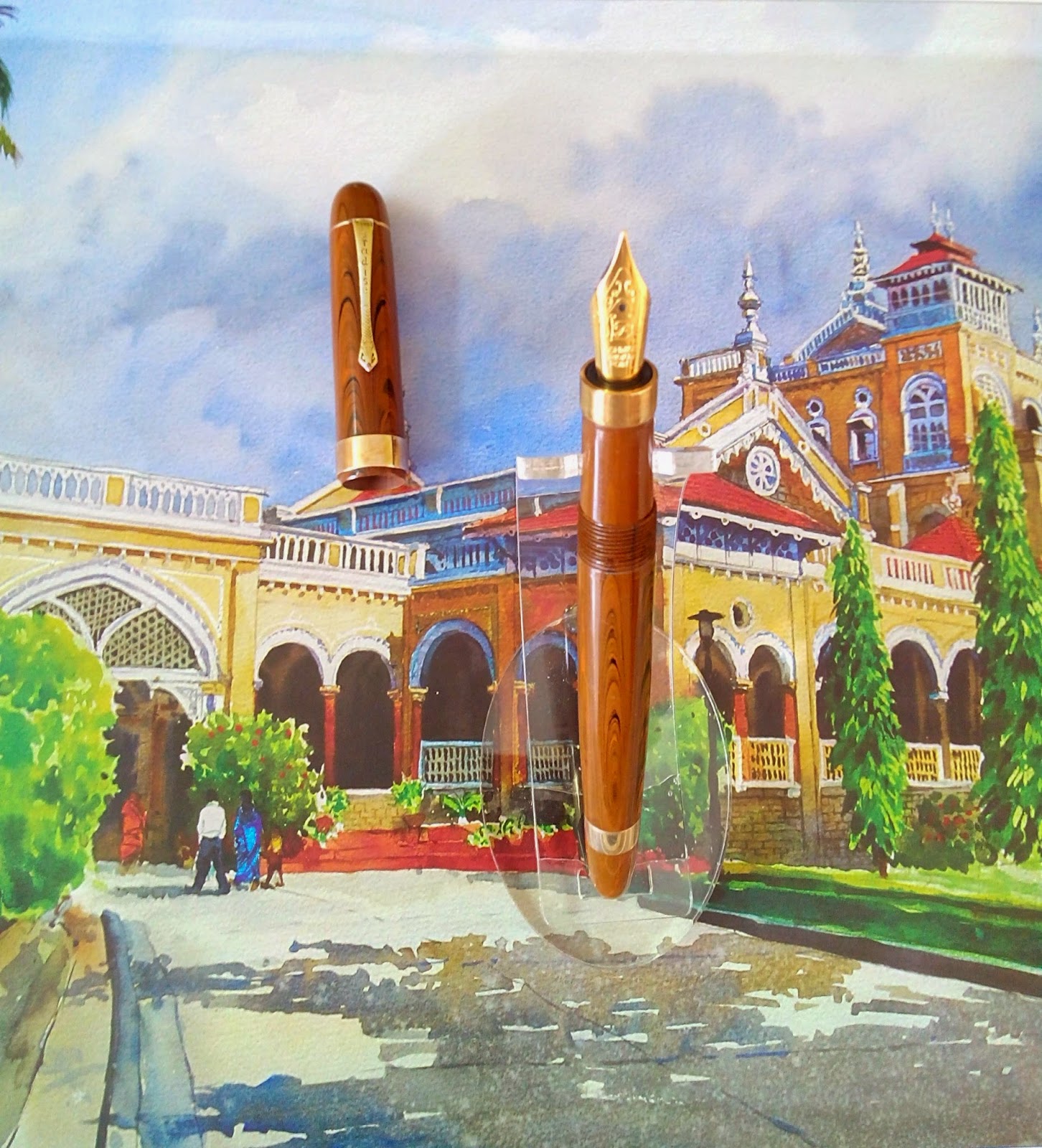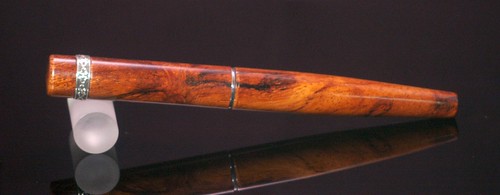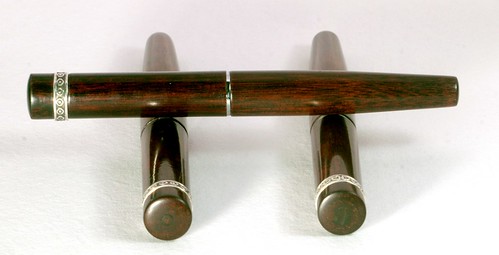Most recently, I had purchased rods of Brick Red ebonite from my usual supplier, who sells industrial ebonite. The brick red ebonite goes really well with Sandalwood pens. These rods look darker than the actual color of the material and at times it's hard to tell what they are going to look like ones turned.
One such rod I had purchased looked as if its the same brick red ebonite, but was slightly darker. Upon turning, it revealed a beautiful brown ebonite with rippled pattern. What's unusual about it is the colors. This rod has two color ripples. I have seen single color (typically black) ripples in a base color of brown, green, red etc or the reverse. But I have never seen a two color rippled pattern.
I had to make a pen and see what it looked like once polished. And here is the end result:
You can clearly see the multi-color ripples which are rather unusual. I have searched the internet for similar material, and have not come across this pattern. The base color is also different. It is brownish red, as compared to brownish yellow, typically found on India ebonite pens.
This comparison shot will highlight the difference:
I have added Gunmetal Bronze accents to mine which goes well with this material. The Snake clip is from a vintage pen.
Here are the dimensions of my pen:
One such rod I had purchased looked as if its the same brick red ebonite, but was slightly darker. Upon turning, it revealed a beautiful brown ebonite with rippled pattern. What's unusual about it is the colors. This rod has two color ripples. I have seen single color (typically black) ripples in a base color of brown, green, red etc or the reverse. But I have never seen a two color rippled pattern.
I had to make a pen and see what it looked like once polished. And here is the end result:
You can clearly see the multi-color ripples which are rather unusual. I have searched the internet for similar material, and have not come across this pattern. The base color is also different. It is brownish red, as compared to brownish yellow, typically found on India ebonite pens.
This comparison shot will highlight the difference:
Here are the dimensions of my pen:
- Overall size: 150mm x 14.9mm
- Body: 134mm x 12.1mm
- Cap: 62mm x 14.9mm
- Cap to Barrel Threads: 12mm x 0.8mm double start
- Weight: 22g


























